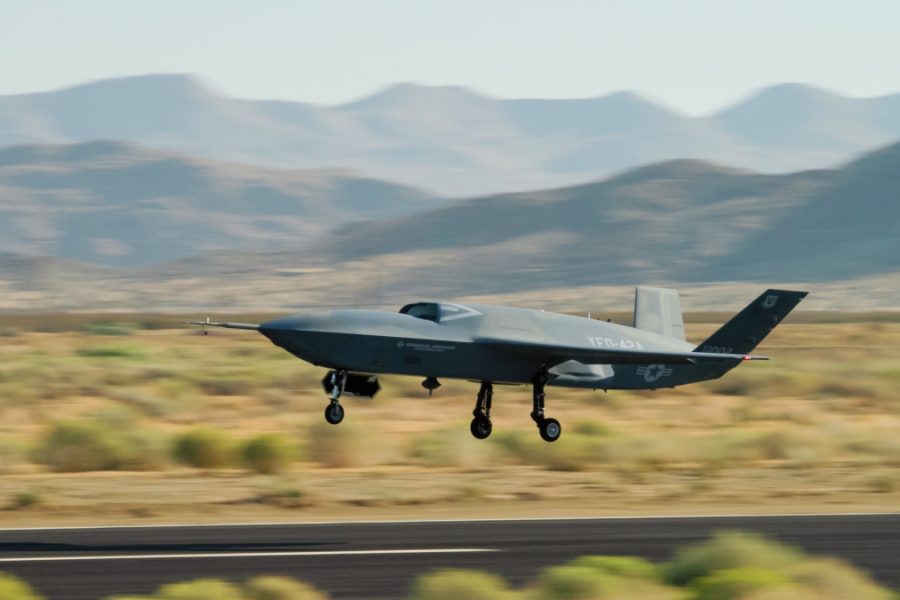The first Collaborative Combat Aircraft made its first flight Aug. 27, achieving a major milestone as the Air Force seeks to integrate autonomous, uncrewed aircraft into manned flying formations.
General Atomics’ YFQ-42A took off from a California test location, the Air Force said. Sources previously told Air & Space Forces Magazine that the aircraft would fly from Gray Butte Airport, owned by GA and near Edwards Air Force Base, Calif.
The Air Force did not provide an update on the other CCA in development, the YFQ-44A under development by Anduril Industries, a venture-backed startup from Silicon Valley that is seeking to shake up defense acquisition. In a statement, an Anduril spokesperson said that “Flight testing for Anduril’s YFQ-44A will begin soon.”
The General Atomics entry is based on GA’s “Gambit” concept, an adaptable series of uncrewed aircraft that share a common engine and chassis. The firm first unveiled the Gambit concept in 2022, and was selected, along with Anduril, to compete in the first CCA fly-off in spring 2024, going from contract to first flight in less than two years.
“This milestone showcases what’s possible when innovative acquisition meets motivated industry,” said Secretary of the Air Force Troy E. Meink in the Air Force statement. “In record time, CCA went from concept to flight—proving we can deliver combat capability at speed when we clear barriers and align around the warfighter.”
Air Force Chief of Staff Gen. David W. Allvin shared video of the first flight on social media.
CCA is in the air less than two years after the program began! Your @usairforce is moving FAST & learning FAST. CCA will help us rethink the battlespace, extend reach & optimize warfighter performance through human-machine teaming. @GenAtomics_ASI https://t.co/oGP8ZTW4oz pic.twitter.com/JJ0zlwuVbs
— General David Allvin (@OfficialCSAF) August 27, 2025
“What a great moment for the U.S. Air Force and for GA-ASI,” said GA-Aeronautical Systems Inc. president David R. Alexander in a statement. “It’s been our collaboration that enabled us to build and fly the YFQ-42A in just over a year. It’s an incredible achievement and I salute the Air Force for its vision and I salute our development team for delivering yet another historic first for our company.”
The highly anticipated first flight had been hinted for weeks. Both GA and Anduril’s drone prototypes started ground testing in May.
The two CCA constitute the “increment 1” of the CCA program, which senior Air Force leaders have said will be iterative and include at least three stages. Increment 1 focuses on air superiority, providing fire support to crewed aircfaft. The aim is for pilots flying F-22 and F-35 combat jets to direct CCA to fire missiles at hostile targets, creating additional complexity for opposing forces.
Pilots have said they want the ability to carry and fire more missiles than the F-22 or F-35 can carry internally; carrying weapons externally compromises the jets’ stealth characteristics.
The CCA program seeks to generate “affordable mass” by adding aircraft and firepower at a lower cost and risk than can be accomplished with crewed aircraft that have to carry life support systems.
Brig. Gen. Jason Voorheis, program executive officer for fighters and advanced aircraft, has said the Air Force could fund both Increment 1 CCAs into production, but has guaranteed no minimum amount of work to either contractor. The Air Force said in a release that a production decision is expected in fiscal 2026, which starts Oct. 1.


